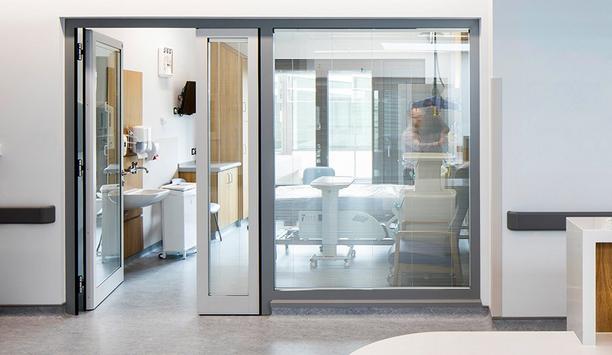The long-awaited announcement by the government to ensure sprinkler systems are mandatory in all new high-rise blocks over 11 meters tall has been welcomed by all. However, what happens next - and how quickly - is crucial for all concerned.
The UK government recently announced an amendment to the statutory guidance to building safety regulations, known as Approved Document B, reducing the requirement for sprinkler systems from the current 30 meters to 11 meters in high-rise buildings.
New laws and measures
The Fire Safety Bill, which was introduced to Parliament in April, will also empower fire and rescue services to take enforcement action and hold building owners to account if they do not comply with the law.
The new measures are welcomed in the construction industry and related supply chains who have been waiting for clarity to improve the increased fire protection so badly needed.
This will help to save lives and property
In essence, this will help to save lives and property. In the event of a real fire, the need for sprinklers to help suppress the fire is crucial. Moreover, the requirement for consistent supply of power to these systems is equally important.
Seeing the detail behind it
Many buildings such as tower blocks, hospitals, schools, shopping malls, airports and those areas with large numbers of people moving rely on electrical systems which will continue to operate in a real fire and provide power, providing crucial intelligence to the fire and rescue services.
There can be no compromise in the specification of cabling which provides that power, offering fire protection of up to 120 minutes. The sooner the practical guidance can be rolled out, the sooner they can be applied and the sprinkler systems being specified now can be installed in the knowledge that all best practice has been followed in the interests of safety for all concerned.
The Institution of Fire Prevention Officers (IFPO) supports AEI Cables in the call to ensure that reliable continuous power is provided for sprinkler systems with the installation of only approved cabling for these purposes.
The tried and tested generation of AEI Cables’ fire performance cabling ensure critical fire-safety circuits can continue to operate in the event of a fire from 30 minutes up to 120 minutes and often support systems which provide vital information. The Firetec Total Fire Solutions range from AEI Cables offers enhanced fire performance cabling, accessories and technical support from one source.
Danger ‘significantly reduced’
AEI Cables’ Firetec Enhanced cabling is the only cable to be independently approved and certified by LPCB to BS8519 (Annex B) Category 3 Control for firefighting systems including sprinkler pumps, fire suppression water mist systems, water spray systems, wet riser pumps, wet riser valve and equipment monitoring under the Code of Practice.
We also welcome the Government’s move on regulation, with the decision to appoint a new organization to be known as The Building Safety Regulator, to be established under the umbrella of the HSE, responsible for enforcing a more stringent regulatory regime covering buildings over 30 metres tall or of 10 storeys or more in height.
It will be responsible for completing a register of buildings in scope and for oversight of their fire safety. The new Buildings Regulator will need to liaise with existing regulatory bodies and fire safety organizations to ensure that it has the most appropriate and up-to-date construction and fire-related knowledge.
Call for retrofitting of sprinklers
The danger to life, injuries and damage to buildings is “significantly reduced” when sprinkler systems are fitted
In addition, a new Construction Products Standards Committee will work on the development of technical standards for construction products and will advise the Government whether voluntary industrial standards should become UK regulatory standards, a role currently undertaken by the European Commission. Again, this is sorely needed to ensure specification of approved products, installed using best practice, brings further reassurance of safety for the public.
The Royal Institute of Chartered Surveyors (RICS), the Royal Institute of British Architects (RIBA) and the Chartered Institute of Building (CIOB) previously made a call for the installation of sprinklers to become mandatory in all residential buildings, hotels, hospitals, schools and care homes taller than 11 metres. The same organizations have also called for sprinklers to be retrofitted where possible.
Latest national research carried out by the National Fire Chiefs’ Council and the National Fire Sprinkler Network reveals that the danger to life, injuries and damage to buildings is “significantly reduced” when sprinkler systems are fitted. That speaks volumes.
At AEI Cables, we work secure in the knowledge that all of our products are supplied with approvals from independent bodies including BASEC and LPCB. We hold approvals from organizations including Lloyds, the MoD, Network Rail and LUL and work to international standards around the world. We look forward to seeing further detail on how we can work together in the supply chains to apply the highest standards going forward for everyone’s sake.

















